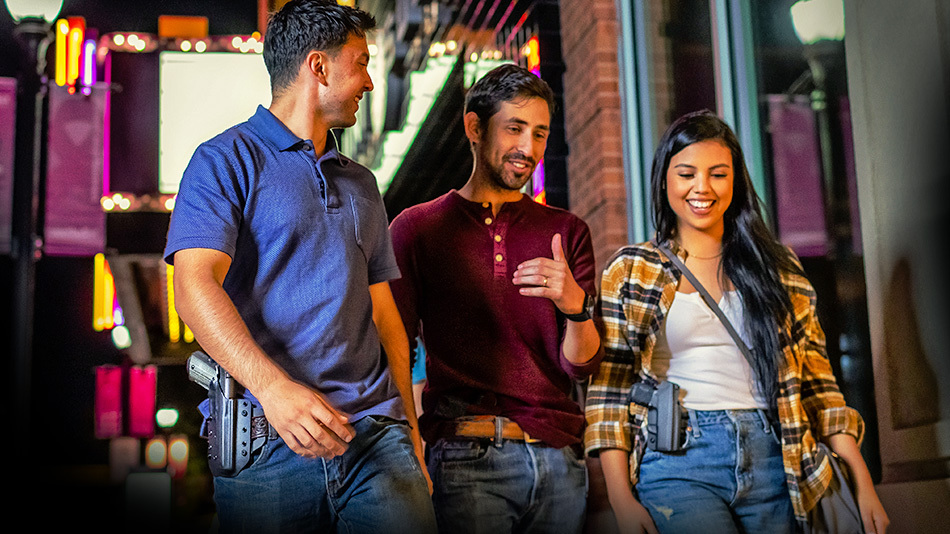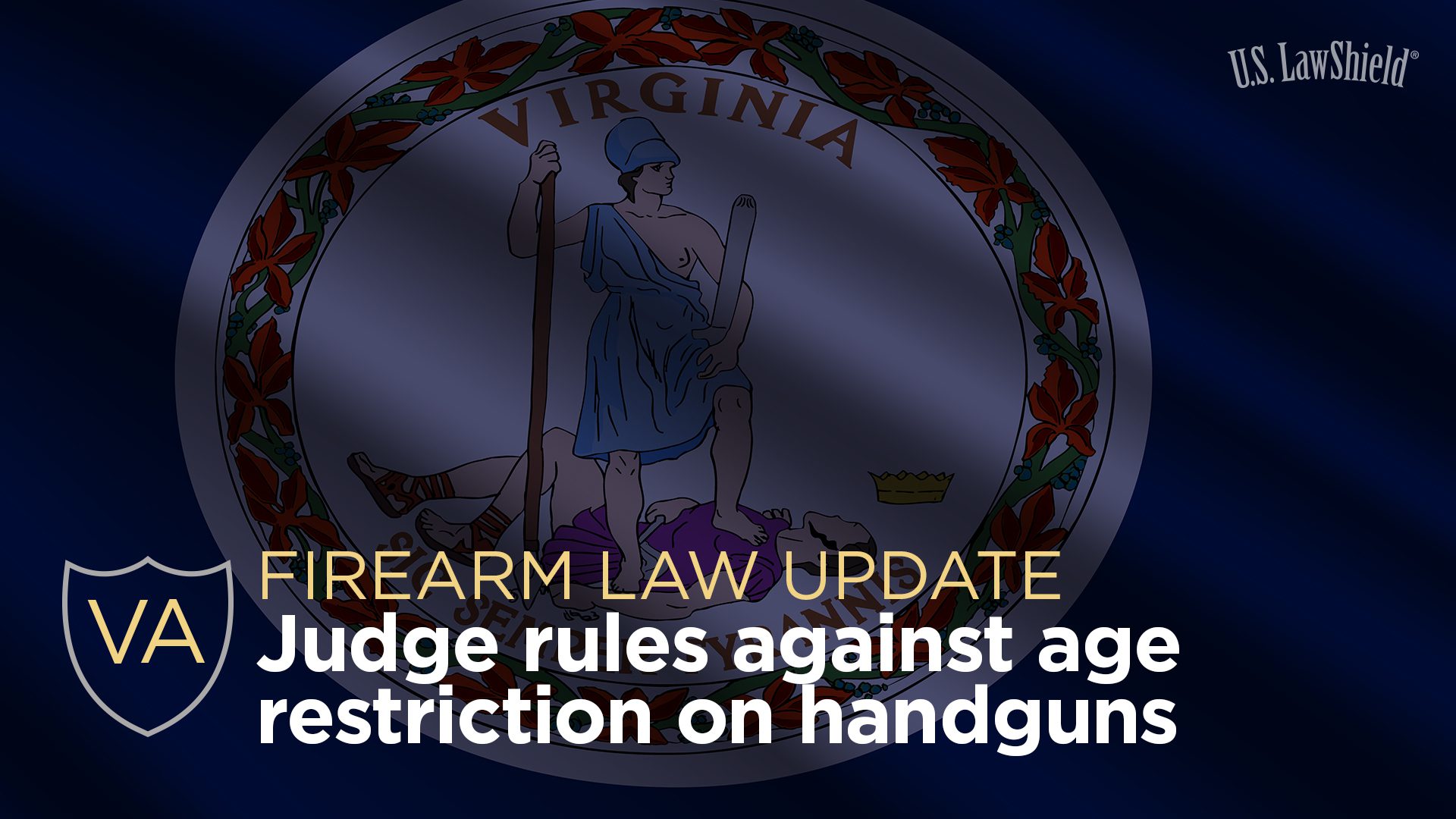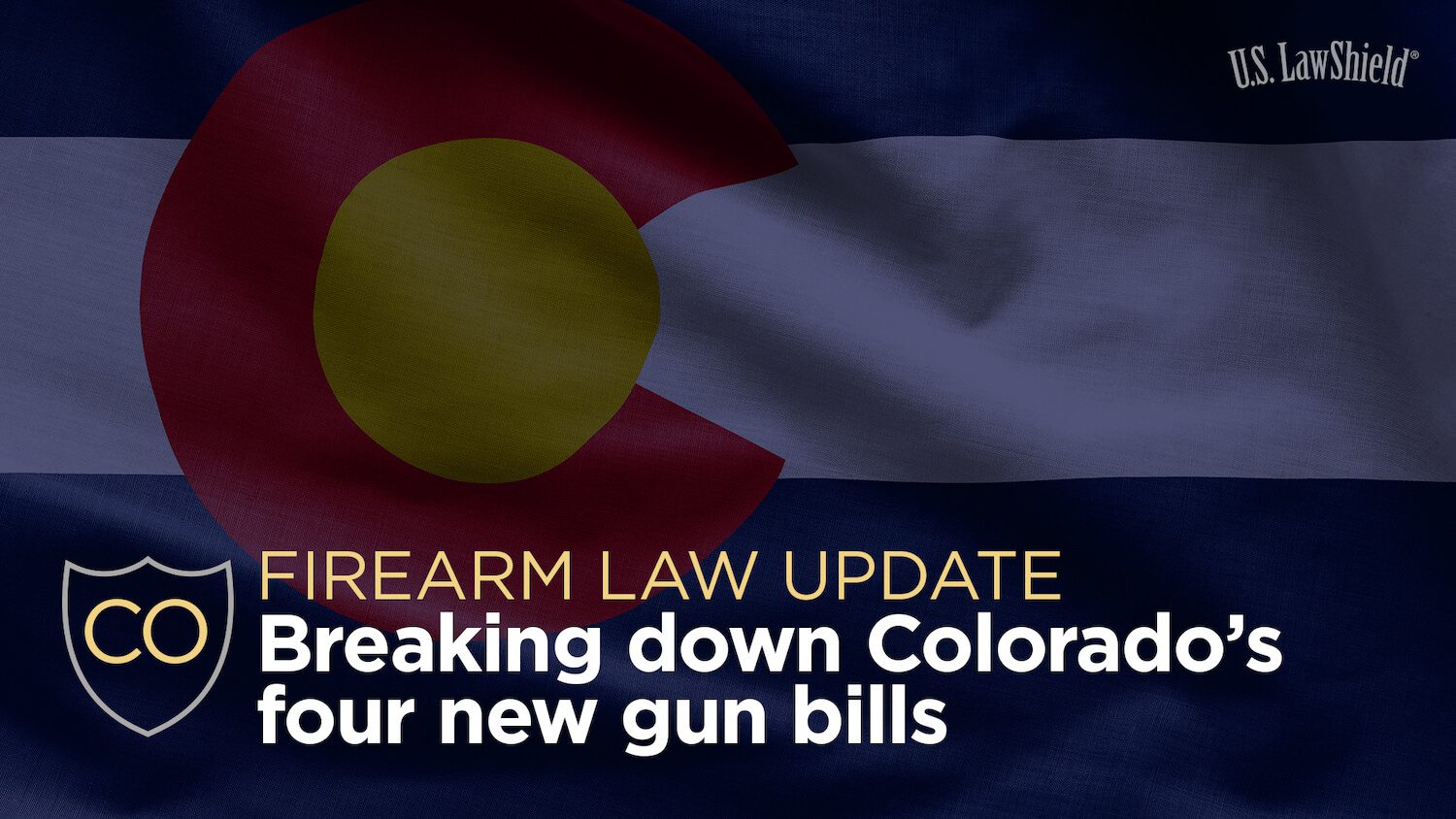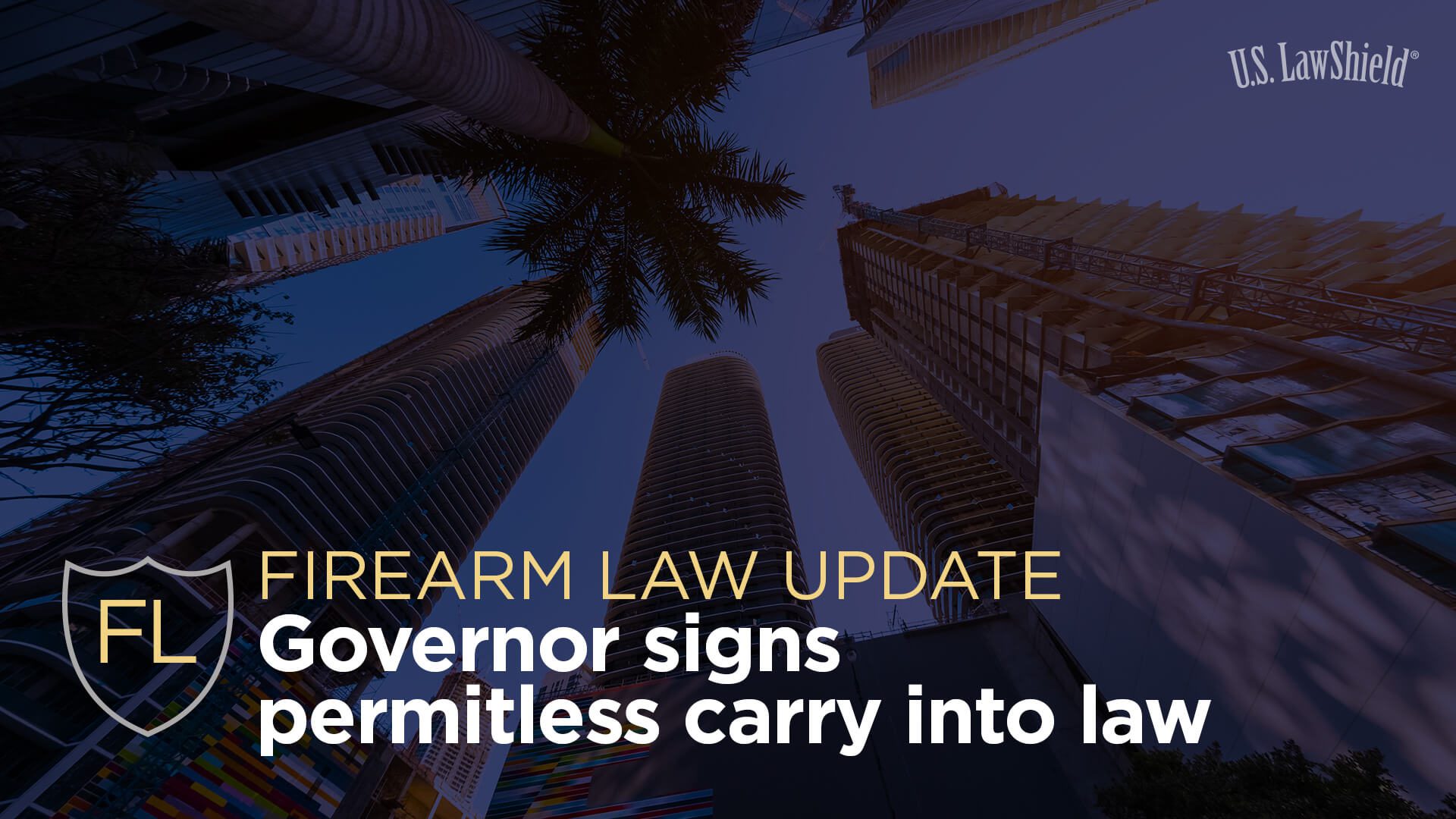
What is Open Carry? Simply put, it’s the practice of carrying a wholly or partially visible firearm. It could be a holstered handgun that’s not hidden under a concealment garment, or the less common practice of carrying a long gun on a sling. Since the gun isn’t concealed, it’s carried “in the open” hence the term “open carry.”
Open Carry vs. Concealed Carry
The obvious difference between open and concealed carry is whether the firearm is visible. However, because open carry laws can vary from state to state, what’s considered “visible” in one state may not be treated the same in a different jurisdiction. Additionally, how a person can legally carry a visible firearm may differ from state to state, or may be prohibited all together. For example, in Illinois it’s illegal to open carry. However, per the Illinois Firearm Concealed Carry Act, a licensee may “carry a loaded or unloaded concealed firearm, fully concealed or partially concealed, on or about his or her person….”
There are pros and cons to both types of carry. Open carry advocates point to a larger selection of comfortable holsters, along with the ability to carry larger firearms that may be easier to shoot. People who prefer concealed carry will point out that open carry can make you a more likely target for criminals. However, with some research on holster choices, it’s possible to carry a full-sized gun concealed.
Permissive Open Carry States
Some states do not require a person to have a permit to open carry a handgun. In such areas, generally, if a person isn’t prohibited from owning a firearm, they may legally open carry. However, some permissive states allow local governments, such as counties or towns, to place restrictions on the open carrying of firearms. On the other hand, some states preempt local governments from enacting restrictions on the open carrying of handguns, providing consistency in openly carried firearm laws throughout that state. To make matters more confusing, some states only allow unlicensed open carry of unloaded firearms. For example, Colorado allows unrestricted open carry statewide, except for the city and county of Denver. In 2004, Denver passed a law restricting all open carry. Texas is another example of a permissive state that allows restrictions. In the Lone Star State, businesses can post specific signage that prohibits open or concealed carry on their premises.
Licensed Open Carry States
The second most common type of open carry state is one that allows open carry only to persons that have a carry permit. In Indiana, the carry permit is called a License to Carry a Handgun and allows the holder to carry concealed or open in places where carry is permitted. South Carolina (“SC”) passed the Open Carry with Training Act in 2021, this law allows open carry for SC permit holders that receive the state mandated training. Similar to Texas, SC also allows businesses to post signs that prohibit open or concealed carry, so long as those signs follow the guidelines set out in state law.
Anomalous Open Carry States
There is only one state that falls under this category: California. It’s appropriate then, that this type of open carry is referred to as anomalous. In California, open carry is generally prohibited. However, there is an exception for countries that have a population of fewer than 200,000 people. In these counties, the sheriff or a chief of police in a city within that county may issue a permit to a person for open carry.
Non-Permissive Open Carry States
Some states simply do not allow ordinary citizens to open carry. In these states, open carry is prohibited to private persons. Illinois, New York State, and the District of Columbia all ban any type of open carry. Tennessee bans the open carry of long guns except while hunting. Florida also generally bans open carry, unless a person is hunting, fishing, or practicing shooting. In several other states, open carry is technically allowed with a permit to carry, but because permits in those states are so difficult to get, it is de facto prohibited. New Jersey is an example of a state that technically allows open carry, but in practice doesn’t.
Open Carry as a Form of Protest
In recent years, there has been a movement of openly carrying firearms at political demonstrations. This peaked during 2020, with armed protesters gathering to protest ongoing COVID-19 restrictions in many states, as well as at political rallies during the 2020 election. Be it for lawful self-defense, an expression of a constitutional right, or perhaps even intimidation, a police officer may be eager to arrest a person carrying a firearm at a political demonstration. Keep in mind, there has been growing pressure to legislatively restrict openly carried firearms at protests and rallies. SC, which legalized open carry in 2021, had their capital city of Columbia rapidly pass legislation restricting open carry at events.
Contact with Law Enforcement
If open carry is legal in your state and you choose to carry a visible handgun, you run a higher likelihood that you will be stopped by a police officer. Even if your state law permits open carry, in urban areas it is often an unusual practice, which can attract unwanted attention. This is especially true if someone is carrying a rifle in the open. While openly carrying handguns has been a part of life in the United States for many years, carrying a rifle in public these days can be seen as unusual. If you do interact with law enforcement, it’s important to understand the officer may be responding to a “person with a gun” 911 call, which are normally very dangerous calls to respond to.
Personal Safety
People openly carrying a handgun in public have been targeted by criminals and had their guns stolen. It’s important to consider the potential risks of carrying openly vs. concealed carry. In 2020, a Louisiana man was open carrying, and was targeted by two criminals. They threatened the man with a gun of their own and then took the open carrier’s gun off him. Having an exposed firearm makes you an object of attention, and not all attention is good. Certainly, you might have conversations with other gun owners, but you also might be singled out by a criminal as a potential target.
Legal Considerations
Due to the increased risk of an encounter with law enforcement, or being targeted by a criminal, that comes with open carry, it’s imperative that you integrate a plan for obtaining legal defense into your self-defense strategy. Being knowledgeable of the law is a good start but having access to an attorney is even better. Members of U.S. LawShield® have access to an Attorney-Answered Emergency Hotline 24/7/365. To learn more or become a member, click here.
Your Protection Starts Here!
The information provided in this publication is intended to provide general information to individuals and is not legal advice. The information included in this publication may not be quoted or referred to in any other publication without the prior written consent of U.S. LawShield, to be given or withheld at our discretion. The information is not a substitute for, and does not replace the advice or representation of a licensed attorney. We strive to ensure the information included in this publication is accurate and current, however, no claim is made to the accuracy of the information and we are not responsible for any consequences that may result from the use of information in this publication. The use of this publication does not create an attorney-client relationship between U.S. LawShield, any independent program attorney, and any individual.




Leave A Comment